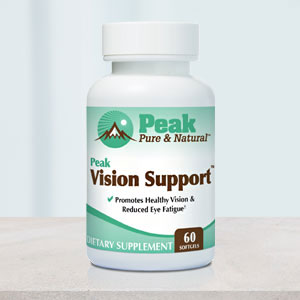Get Easy Health Digest™ in your inbox and don’t miss a thing when you subscribe today. Plus, get the free bonus report, Mother Nature’s Tips, Tricks and Remedies for Cholesterol, Blood Pressure & Blood Sugar as my way of saying welcome to the community!
7 reasons to wear sunglasses this summer and beyond

When the sun’s out in full force, like it is in the summer season, everyone starts to think about protecting their skin.
That’s because the sun increases risks for skin cancer and is responsible for about 90 percent of skin aging by damaging key proteins responsible for keeping it firm and smooth.
But if you’re not protecting your eyes from the ravages of the sun as well, you could be in trouble…
Why your eyes need protection from the sun
When I was in high school, all the cool kids wore Ray-Ban® sunglasses. But now that we’re older, there are more important reasons to break out the sunglasses.
Sunglasses protect the light-sensing photoreceptors in the eye by blocking harmful ultraviolet (UV) rays.
That makes them a must for preserving your eye health and preventing problems like the following…
Solar retinopathy
Solar retinopathy is a permanent sunburn on your retina that can cause vision loss and blindness. Image-sensing photoreceptors are destroyed by looking directly at the sun, watching a solar eclipse or even with prolonged exposure to intense sunlight.
Pterygium (surfer’s eye)
Pterygium, or surfer’s eye, happens when a cloudy, wedge-shaped bump forms on the cornea from the corner toward the pupil. These growths usually remain small, but if they expand, they can affect your vision and cause discomfort.
Photokeratitis
In photokeratitis, sun exposure literally burns the cornea and conjunctiva, causing eye sensitivity and pain, redness, watery eyes, blurry vision and swelling. Photokeratitis can also occur when UV light reflects off snow, ice or water (also known as snow blindness), or when it’s emitted by a source like a tanning bed.
Cataracts
When a cataract develops, it clouds your eye’s lens. While they may not affect your vision at first, they can make it harder for you to read, drive and perform other everyday tasks. Cataracts typically happen with age, but exposure to UV light can accelerate cataract development.
Age-related macular degeneration
Age-related macular degeneration (AMD) causes the progressive decay of the macula, the part of the eye responsible for your central vision. The macula begins to thin with time, which causes you to lose the vision in the center of your eye. Aging commonly increases your risk of developing AMD, but extensive UV exposure can raise your risk as well.
Migraine and headaches
About 60 percent of headaches and as many as two-thirds of migraines are caused by bright lights, including the glare of the sun. In fact, it can take as little as five to 10 minutes out in the sun to trigger a migraine.
Other protective qualities
Sunglasses with polarized lenses can reduce the glare that occurs when sunlight bounces off water, snow or glass by filtering out horizontal light waves. This makes it easier for our eyes to focus and reduces eye strain and fatigue.
Tinted lenses can also keep us from squinting in bright sunlight, making it easier for us to distinguish between objects and colors and reducing the strain on our eyes.
Even on cloudy days, it’s a good idea to wear sunglasses if you’re going to spend prolonged time outdoors since some UV rays will still be present.
Choosing the right sunglasses
Note that not all sunglasses prevent UV rays from reaching your eyes. You need to choose a pair that has 95 to 100 percent UV protection or one with a “UV 400” sticker. Lens color also matters, with brown, green, and gray lenses being the best options. Yellow lenses provide less sun protection.
In addition, you probably want a pair of sunglasses with polarized lenses, since they will help reduce glare and reflections. However, they can be inconvenient if you need to use a device with a screen, as they will make the screen hard to read.
If you already have a pair of sunglasses but don’t know how much UV protection they offer, you can verify this with a photometer. This device is likely available at your eye doctor’s office and at some sunglasses retailers.
Once you’ve chosen your sunglasses, ensure they fit properly. If you have space between the frames and eyes, or your sunglasses slip down your nose, you’ll expose your eyes to UV radiation. It’s probably best to buy your sunglasses at an eyewear store so that they can be precisely fitted to your face.
Editor’s note: There are perfectly safe and natural ways to decrease your risk of blood clots including the 25-cent vitamin, the nutrient that acts as a natural blood thinner and the powerful herb that helps clear plaque. To discover these and other secrets of long-lived hearts, click here for Hushed Up Natural Heart Cures and Common Misconceptions of Popular Heart Treatments!
Sources:
How Sunglasses Help Protect Your Eyes’ Health — Johns Hopkins Medicine
5 Reasons You Should Wear Sunglasses More Often — River Heights Eye Care
Sunglasses and Your Eyes — Columbia University Irving Medical Center
What Role Do Sunglasses Play in Preventing Eye Strain and Fatigue? — Optical Masters
Why Does the Sun Give Me a Headache? — TheraSpecs
How Sunglasses Can Help Prevent Migraines Triggered by the Sun—And More! — Optometrists’ Clinic Inc.














